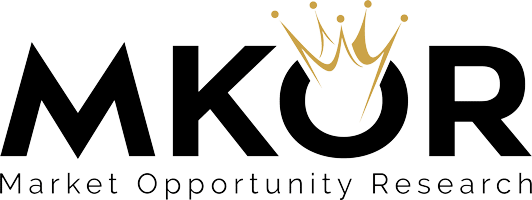Monitoring your brand’s performance helps you optimize marketing investments to strengthen customer relationships. Everything is based on assessing your brand’s position in the market.
Understanding how consumers perceive your brand allows you to develop more effective marketing and communication strategies.
However, many companies do not integrate brand evaluation into their performance analysis. They track metrics like sales or retention rates but lack data on brand perception and how it compares to competitors.
So, what exactly does brand tracking mean, and how can it contribute to better results?
Understanding the motivations and barriers that influence purchase decisions is essential for making informed decisions and increasing consumer loyalty to your brand. Agile Brand Tracking helps you uncover these key insights through continuous and precise monitoring of brand performance.
With Agile Brand Tracking, you can assess whether your brand is the preferred choice in the market or if there’s a risk of being overtaken by competitors. By analyzing indicators such as “top of mind” awareness or spontaneous awareness, you can identify your position relative to the competition. Consumers choose brands they recognize and trust. Low visibility can lead to losing ground to competitors.
Thus, Agile Brand Tracking analyzes consumer usage and brand preference, offering a clear picture of the factors that drive purchases.
Purchase decisions are influenced by a combination of emotional, rational, and contextual factors. Among the most relevant are:
- Brand perception: Reputation, associated values, and market positioning.
- Product quality and price: Consumers often weigh these aspects to assess perceived value.
- Previous experience with the brand: A positive history builds trust, while a negative experience becomes a barrier.
- Communication channels: How and where a brand communicates influences how consumers receive messages and shape their opinions.
These factors vary significantly depending on the audience, so understanding them requires a structured analysis and adaptation of strategies.
Why is it essential to understand consumer motivations and barriers?
Understanding motivations (what attracts them) and barriers (what hinders them) offers a clear perspective on the needs of your target audience. This enables the creation of offers, messages, and products that directly address those needs.
Data about influencing factors allows for optimal allocation of resources to segments with the highest conversion potential. For instance, if a common barrier is the lack of clear product information, the communication strategy can include educating customers through informative content.
Identifying motivations for loyal customers (e.g., consistent quality or reliable customer support) helps strengthen those aspects, turning occasional buyers into brand ambassadors.
Consumer preferences and behaviors change rapidly, influenced by factors like technological innovations or economic shifts. An analysis of these variations is crucial for adjusting marketing strategies efficiently and effectively.
Motivational Factors Influencing Purchase Decision
Key factors that positively influence purchase decisions are the elements that encourage consumers to choose a specific brand or product. These factors may include:
- Product or service quality aspects. Consumers prefer solutions that offer value, durability, and performance. For example, a product with positive reviews and a strong reputation builds trust.
- Price is a major decision factor in Romania. When the price-quality ratio is perceived as fair, customers are more likely to purchase. Well-structured promotional campaigns or discounts can be decisive.
- Brand reputation and credibility. Brands that communicate authentically and consistently reinforce their values, gaining public loyalty. Positive recommendations and social influence amplify this motivation.
- Innovation and customer experience. Smooth, fast, and personalized interactions, both online and offline, contribute to a positive purchase decision. Additionally, products that offer new functionality, desired design, or technological advancements add a differentiating factor that attracts attention.
Barriers for Purchasing
Among the inhibitory factors that prevent consumers from completing a purchase are:
- Lack of trust in the brand. Difficulties in verifying the legitimacy or quality of a product (e.g., lack of reviews, unclear return policies) cause hesitation.
- Prices perceived as too high. If the price is not justified by the perceived value, consumers will look for alternatives. Insufficient communication about product benefits worsens this issue.
- Inefficient communication. Ambiguous or incomplete messages, or those delivered through inappropriate channels, can leave consumers confused, reducing the likelihood of a purchase.
- Complexity of the purchasing process. Poor user experiences, such as slow websites, complicated payment processes, or unprepared customer service, may discourage clients.
- Lack of personalization. Consumers expect products and messages to be tailored to their specific needs. The absence of this element can create a disconnect between brand and client.
To efficiently and quickly identify these factors, we developed a new service: Agile Brand Tracking, which in 2025 will feature four research waves.
With Agile Brand Tracking, you will obtain real-market insights on: brand awareness, usage, preference, Net Promoter Score (NPS), and brand perception.
And if you choose to collaborate with us next year, you will receive two bonus questions related to detractor and motivator factors among consumers and non-consumers.
How You Can Identify Consumer Motivations and Barriers to Purchase with Agile Brand Tracking
Agile Brand Tracking uses customized questionnaires addressed to a representative sample of consumers to gather relevant insights into their perceptions. The process includes:
- Brand-related questions: Awareness level, association with certain characteristics or values, and overall satisfaction level.
- Identifying purchase motivations: Evaluating consumer perceptions of the key reasons they choose to buy your brand.
- Identifying perceived obstacles: Questions that explore why consumers do not make a purchase, such as pricing, difficulties in the buying process, or lack of clear differentiation.
Based on 10 socio-demographic questions, which we offer as a bonus, you will receive an analysis of the segments that buy your products as well as those facing barriers that prevent them from making a purchase.
Through these methods, Agile Brand Tracking provides a clear picture of the factors (both positive and negative) influencing purchase decisions.
Still thinking about it?
Sign up on the intent list to receive the full offer for 2025, or if you have any questions, contact us.
Have you read everything? Comment / join our newsletter / read our other research posts!
Agile Brand Tracking – How to Measure and Optimize Brand Performance
January 22, 2025
0 Comments8 Minutes
Discover Your Customers’ Preferred Communication Channels with Agile Brand Tracking
January 22, 2025
0 Comments9 Minutes
How to Do Brand Tracking – Monitoring and Improving Brand Awareness
July 30, 2024
0 Comments14 Minutes


